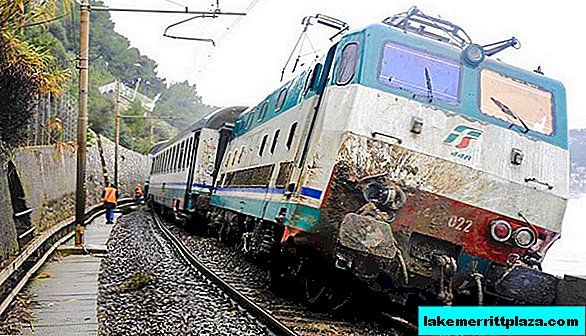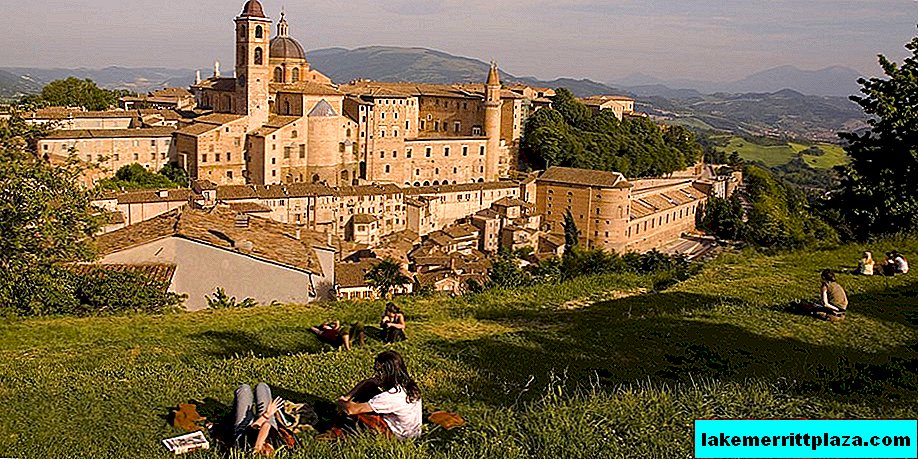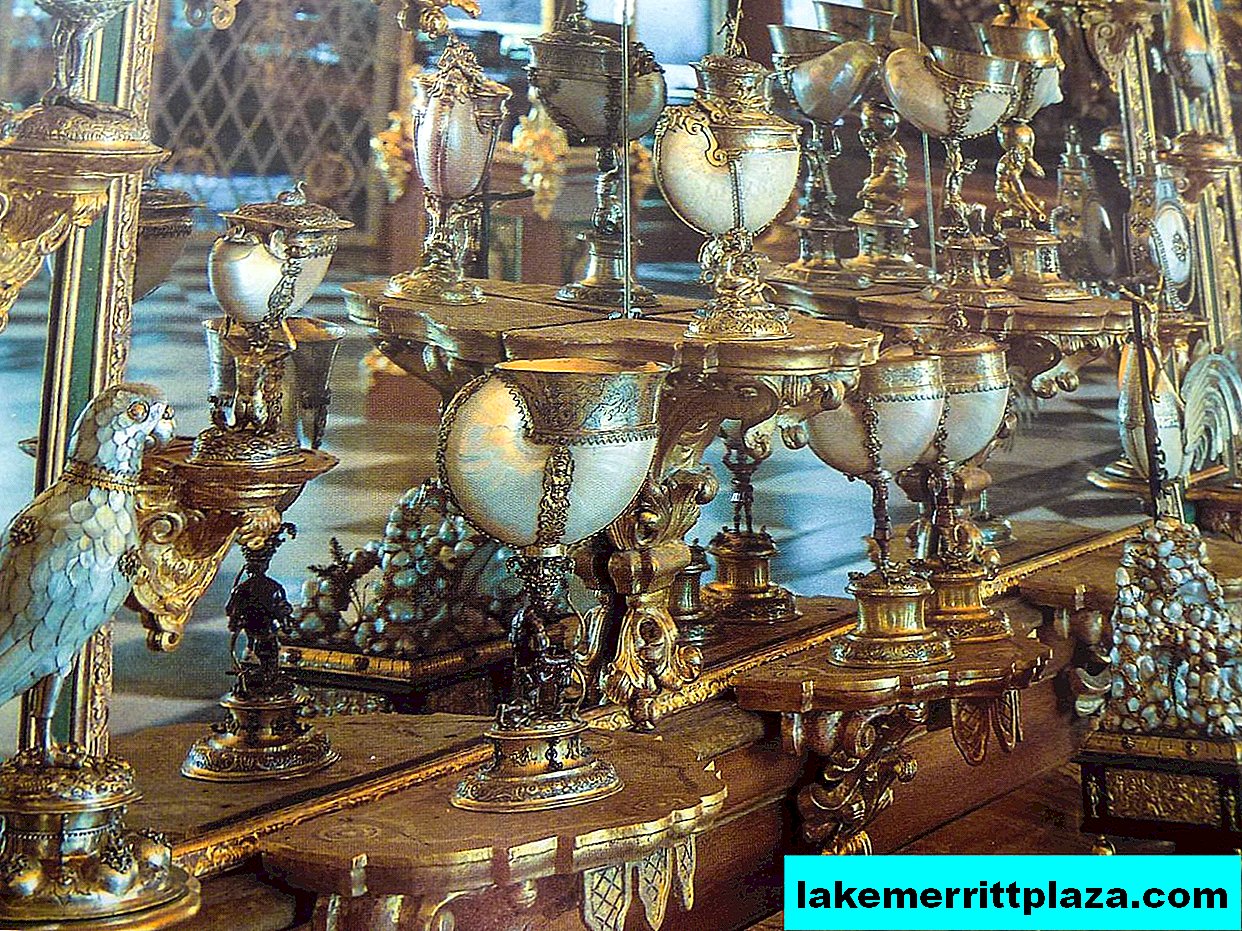Earthquakes are a distant and unknown for most people, but at the same time very terrifying phenomenon. I think that in our country there is no such person who would not sympathize with the affected Italian families after the recent rampage of the elements in Amatrice and Accumoli.
Victims, destruction and, of course, fear - these are constant companions of any catastrophe. Not only locals are afraid of the disaster, but also tourists who exclude Italy from the list of possible vacation spots.
We propose to consider this problem in more detail and to understand whether earthquakes in Italy and Rome are so terrible as they are presented by domestic media.

Why earthquakes occur in Italy
To understand why earthquakes occur in Italy, you need to consider the tectonics of earth plates.
The Earth's shell is divided into several large tectonic plates. Earthquakes occur as a result of the release of energy in the earth's crust due to tectonic displacements.
The southern part of the Italian peninsula is just located near the line where the Eurasian and African plates meet and push against each other, creating seismic tension. The large volcanoes of Etna, Stromboli and Vesuvio are very close to this area.
Besides, Italy has a number of small faults along the Apennine Range (Appennini). It gradually extends at a speed of about 3 mm per year. This slow stretching causes the accumulation of energy in the earth's crust, which is then released during earthquakes.
Minor tremors in mountain valleys occur almost daily. But they are so small that they go unnoticed.
Despite the fact that the territory of Italy is considered one of the most seismically active in Europe, it is worth noting that many large countries of the world are affected by earthquakes, such as Japan, the USA, Britain, India, New Zealand, Australia and several others.
Vulnerable regions
The areas of Italy, the most prone to earthquakes, were legally defined in 2003 to reduce the effects of disasters due to the construction and proper location of earthquake-resistant structures.
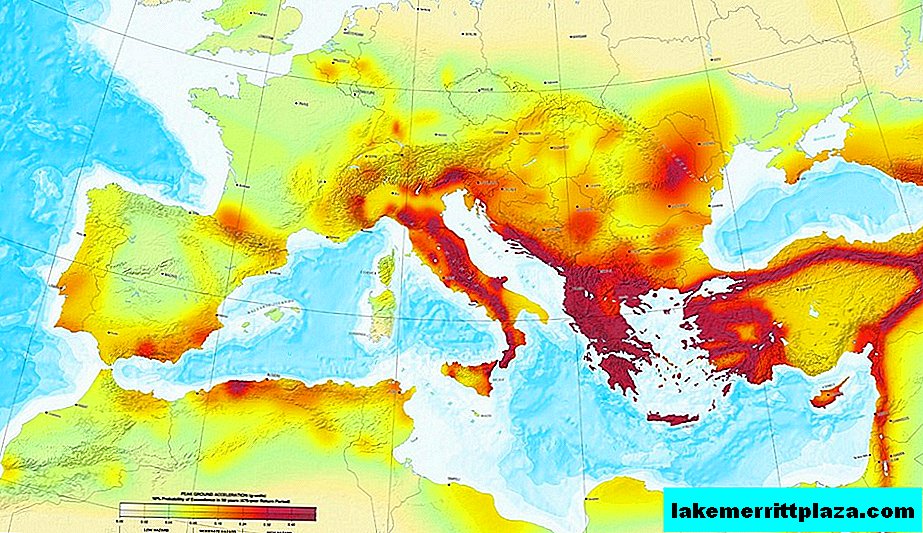
According to a legal measure, the Italian territory is divided into 4 zones depending on the probability of earthquakes:
- Zone 1 - the most dangerous areas where strong earthquakes can occur. Regions: Calabria, the eastern part of Campania, the western part of Abruzzo and the southern part of Umbria (these are areas along the Apennine Range), the eastern coast of Sicily (Sicilia), Friuli-Venezia Giulia ( Friuli-Venezia Giulia).
- Zone 2 - These areas may be partially affected by strong earthquakes. Regions: most of Sicily (except the center of the west coast), Basilicata, Molise, Marche, western Abruzzo, southeast Emilia-Romagna and Lombardia, western Piedmont ( Piemonte), the west coast of Tuscany (Toscana).
- Zone 3 - areas where slight fluctuations are possible. Regions: western Liguria (Liguria), southwestern Piedmont, almost the whole of Emilia-Romagna, the central part of the region of Venice (Veneto), northern Apulia (Puglia), Lazio (Lazio), including Rome (Roma).
- Zone 4 - the least dangerous areas with a low probability of seismic activity. Regions: southern Puglia (heel of the Italian boot on the map), Sardinia (Sardegna), Valle d'Aosta (Valle d'Aosta), most of Piedmont, western and northern Lombardy, Trentino Alto Adige (Trentino-Alto Adige).
Earthquake history
Over the past 2000 years, in the territory of modern Italy, about 400 large earthquakes were recorded, which claimed the lives of several thousand people.
One of the largest natural disasters in Italy in 1783 is called the Calabrian Earthquake. Tremors with a magnitude of more than 5.9 points lasted for almost 2 months. The estimated death toll was around 80,000.

In the first hour of the February 5, 1783 earthquake, magnitude reached 8 points. In just 1 minute, about 100 villages in the Calabria region were razed to the ground. In some places, earth faults over a kilometer in length appeared. Witnesses claimed that "the two mountains went towards each other until they united into one, intercepting the riverbed." Thus, new lakes appeared in the region, which, after 30 years, were artificially drained.
Several hundred people of the city of Scilla, having survived the first tremors, fled for shelter to the beach. Many of them drowned when repeated swings caused a tsunami. Thousands of people were killed by water in the cities of Reggio di Calabria and Messina. Suffering continued in southern Italy and Sicily for the remainder of the winter. In addition, the latest tremors that occurred on March 28 killed several thousand more people.
The Calabrian earthquake of 1783 is rightfully considered one of the most devastating disasters in the history of Western Europe.
Over the past century, Italy has also suffered a series of deadly fluctuations:
- 1908 Sicily and Calabria (magnitude 7.1). The cities of Messina and Reggio Calabria were almost completely destroyed. The death toll reached 200 thousand people.
- January 1915 Abruzzo. A devastating earthquake razed the city of Avezzano, killing 30,000 people. Many people died from severe frosts, left homeless.
- July 1930 Campaign. An oscillation of magnitude 6.6 points claimed about 2,000 lives. Many people were saved by the fact that they were not in the houses, but were engaged in field work to harvest wheat.
- May 1976 Friuli. Shocks of magnitude 6.5 points in northeast Italy. About 1,000 people were killed, 2400 wounded, 157,000 left without housing.
- November 1980 Campaign. With an epicenter in Eboli, a 6.9-magnitude earthquake killed 3,000 people and made about 200,000 homeless. The Leaning Tower of Pisa vibrated for 22 minutes after the tremors ceased.
- April 2009 Abruzzo. Fluctuations in magnitude 6.3 points left homeless thousands of people. Killed about 300. Tremors were felt even in Rome, located 100 km from the epicenter. Members of the National Disaster Prevention Commission were found guilty of manslaughter due to untimely warning of danger.
- May 2012 Emilia-Romagna. Shocks of 6 points in the north of Italy. 24 people died, hundreds of wounded, 15,000 people were left homeless.
Echoes of the earthquakes in Rome
Although Rome is considered a seismically safe area and has never been the epicenter of earthquakes, in its history there are cases of tragic echoes of the elements that caused significant damage.
For example, historians believe that the famous house on the street Valentini (Domus di palazzo Valentini) was once abandoned due to severe damage that occurred after strong tremors in the V century.

The terrible earthquake of 1349 with a magnitude of 6.9 points in the Friuli region caused significant damage to the capital of Italy. So, the famous Tower of the Militia (Torre delle Milizie), located behind the market of Trajan (Mercati di Traiano), lost two floors and acquired a slight slope.
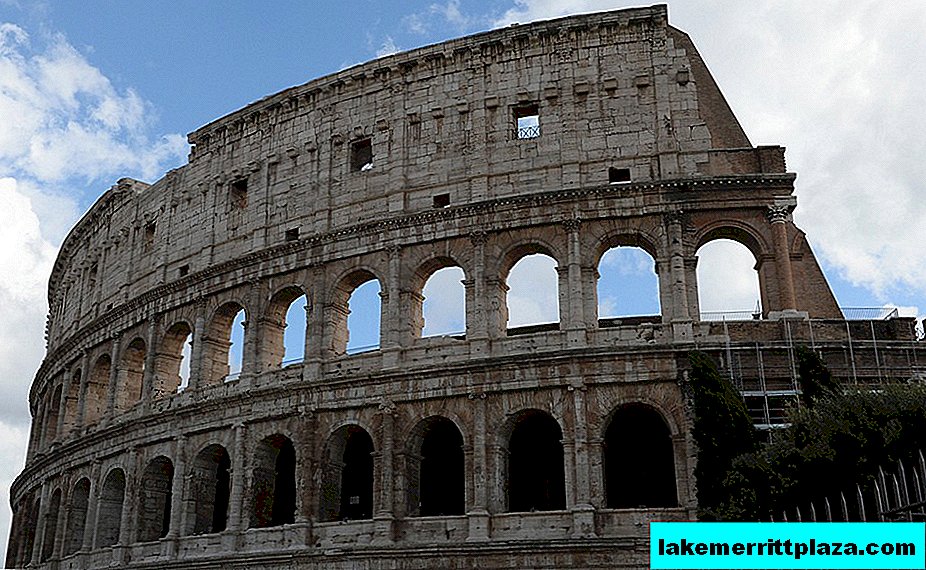
Seismologists claim that it was a severe disaster that destroyed part of the Colosseum and damaged the Basilica of St. Paul (basilica di San Paolo). Incidentally, the basilica suffered from each subsequent case, as it is located in the most vulnerable place - not far from the Tiber River. Francesco Petrarch witnessed the terrible destruction, visiting Rome in 1350. He describes abandoned buildings, destroyed churches, huge cracks in many structures. “Everything is sad,” he writes, “it causes a chilling horror!”
But perhaps the most devastating scale earthquake that reached the city was the disaster of 1703 that erupted in central Italy. Several cities such as Norcia were wiped off the face of the Earth, churches, palaces, monuments were destroyed. The Colosseum was damaged again. People spent the night on the streets for several weeks due to ongoing tremors.
At this element did not leave the city alone. Two centuries later, terrifying destruction and death were repeated again. January 13, 1915 at 7:55 a.m. the city began to shake, people ran out into the streets in a panic. Even the Swiss guards and prelates of the Vatican, leaving their posts, rushed to the exits in horror. Two buildings completely collapsed, the Capitol (Campidoglio) was seriously damaged, cracks appeared on the walls of hundreds of buildings, the column of Antonina (colonna Antonina) turned on its pedestal. Now the base of the column is located at the entrance to the Pinacoteca in the Vatican Museums where we invite you on an individual excursion.
The echoes of some earthquakes and now reach Rome, without causing serious damage.
2016: Implications and Affected Areas
2016 and again the tragic revelry of the elements. The media is full of photographs of destroyed buildings and bloodied bodies, instilling fear in the minds of people around the world. But is everything so terrible ?!

If you carefully look at the dynamics of the number of victims in the history of Italian earthquakes, you can trace a natural decrease in the number of dead people. We invite you to familiarize yourself with what the republic faced this time.
24 August
A powerful earthquake of magnitude 6.2 shook central Italy on August 24 early in the morning. The shocks were caused by movement in the Tyrrhenian Basin (seismically active zone in the Mediterranean).
The epicenter of the earthquake was about 10 km southeast of the historic tourist town of Norcia. The aftershocks killed 297 people: 234 in Amatrice, 11 in Accumoli, 49 in Arquata del Tronto. About 365 injured were taken to hospitals, while people with less serious injuries received assistance on the spot. 238 people were pulled out of the rubble thanks to timely measures.
Mayor Amatrice said that "half of the city is almost destroyed." Economic losses are estimated at between $ 1 billion and $ 11 billion.

Many medieval buildings were turned into ruins. In Amatrice, the facade and the rose-shaped window of the church of St. Augustine (Sant'Agostino) were destroyed. The museum dedicated to the artist Nicolo Filotessio (a student of Rafael Santi) collapsed. Shaking was felt all the way to Rome (about 112 km south-west of the city). Cracks appeared in the Roman terms of Caracalla (Terme di Caracalla).
October 26 and 30
Italy had no time to move away from the summer disaster, when she was struck by a new wave of tremors. A series of powerful earthquakes covered the country between the Marche and Umbria regions from October 26 to October 30, 2016:
- Magnitude 5.5, 8 km southeast of Sellano (October 26 at 20:11 Moscow time). The shocks were felt a little in Rome, although half of my friends in the Romans did not. In the Marche region several houses collapsed. There were power outages, telephone lines did not work.
- Magnitude 6.1 3 km west of Visso (Visso) (October 26 at 22:18 Moscow time). The consequences were less than expected. Died one man who suffered a heart attack due to an earthquake.
- Magnitude 6.6 6 km north of Spoleto (October 30, 06:40 Moscow time). The village of Arquatadel Tronto has been destroyed. Partially destroyed more than 40 settlements. About 100,000 people lost their homes. The Basilica of St. Benedict in the city of Norcia was damaged. During the shaking, two women died from heart attacks.
Victims of the October accident were avoided due to the fact that people managed to leave the building.
2017: Ischia earthquake
On Monday, August 21 at 20:57 local time on the Italian island of Ischia (Ischia) there was an earthquake of magnitude 4 on the Richter scale. Its epicenter was located at sea 3 km north of the island at a depth of 5 km. Seismologists said that the earthquake has a volcanic origin, since the island itself arose 150 thousand years ago after the eruption of submarine volcanoes.
As a result of the disaster, 2 women were killed and 39 people were injured. The city of Casamicciola was hit. About 2,000 people were left without a roof over their heads and were promptly accommodated in hotels.
The good news spreading all over the world was the salvation of three brothers from under the rubble of the destroyed building. The smallest - a seven-month-old baby Pasquale was found at night. He escaped with minor scratches. Eight-year-old Matthias was discovered in the morning, and the teenager Kiro spent 11 years under the rubble for about 14 hours. Their mother, who is 5 months pregnant, was miraculously saved through a window in the bathroom.
As noted, most of the damage occurred due to the dilapidation of structures and non-compliance with earthquake prevention measures during the construction of new buildings. At the same time, the legality of the latter raises some doubts, since the Italian authorities are making significant efforts to minimize the damage from the rampant.
It is worth emphasizing that shaking is not the first time tormenting the island. According to the Catalogo parametrico dei terremoti italiani 2015, Ischia has been subjected to earthquakes 12 times in the past. The latter is dated November 23, 1980. The most devastating happened on July 28, 1883. It left behind more than 2,200 dead from the 4,000th population. But in most cases, the fluctuations did not exceed 4 points and were localized in small territories.
Therefore, the scale of the August 21 disaster can be considered insignificant. By the way, the inhabitants of the southern part of the island did not feel the slightest tremors.
Conclusions and Tips
Not a single scientist in the world can give a long-term forecast for the occurrence of natural disasters. It is impossible to say with accuracy whether a second earthquake will happen in a year or in 20 years. Seismologists claim that Italian territory can be subject to serious shocks every 10-15 years.

It is impossible to prevent an earthquake, but victims and destruction can be avoided through the construction of earthquake-resistant buildings. Today in Italy, much attention is paid to disaster prevention policies. It is clear that buildings in small villages and historical buildings cannot be protected from the elements, but the construction of new buildings in large cities is taking into account the vulnerability of the regions.
Of course, Italy is unsafe ... Unsafe, like all other countries on our planet. We don’t know where and when nature decides to show us its power: it will bring down showers and snowfalls or make a shake, spin a tornado or throw a meteorite. But the fact is obvious that you should not live in fear.
Not to go to Italy because of the possibility of earthquakes is like eating, for fear of poisoning, not becoming a mother for fear of losing your figure, and not loving, afraid that you will be abandoned, while suffering from loneliness. Especially in Rome and other big cities, everything is calm and we learn about many disasters from relatives and friends who, having seen the next news story, immediately call and worry.
The only fear that should be in us is to live the time allotted. Rejoice, love, travel and remember: "Not the one who was in trouble, but the one who lost the spirit!" We are waiting for you in the Eternal City.

